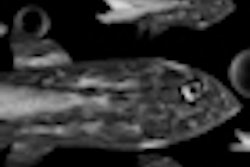Obese women are less likely to complete mammograms and more likely to report pain with the procedure, according to a new study published in the Journal of Women's Health.
The study, conducted by researchers at the Kaiser Permanente Center for Health Research in Portland, OR, evaluated the barriers to screening mammography compliance in the context of a reminder program (J Womens Health, February 2011, Vol. 20:3, pp. 1-8).
In addition to obesity posing a barrier to annual mammography screening, a woman's busy lifestyle also emerged as an obstacle, according to lead author Adrianne Feldstein, MD.
"We conducted a study a few years ago in which we assessed how women responded to consistent reminders for mammography screening, such as mailings or calls," Feldstein told AuntMinnie.com. "We found many patients still didn't respond and wanted to understand why, so we pursued this current study."
The study was conducted in 2008 and 2009 with Kaiser Permanente Northwest members between the ages of 50 and 69 in southern Washington and northern Oregon. Feldstein's team used electronic databases for data on patient membership, healthcare coverage, demographics, height, weight, vital signs, personal and family medical history, and healthcare use.
Feldstein's team discovered that the following patient characteristics were associated with lower mammogram completion rates:
- Women younger than age 60
- Health plan membership less than five years
- Family income less than $40,000 per year
The study also found that obese women were more likely than nonobese women to report "too much pain" from mammograms: 31% versus 19%, respectively.
The barrier of pain at mammography screening is a public health issue in the area, according to Feldstein: 47% of the community-based, insured sample of women who had already had a prior mammogram and had been weighed were obese.
As well, younger women were more likely to report that they were "too busy" (19% compared with 6%) and that they had more worries about mammogram accuracy.
How can these obstacles be addressed? Mammography facilities can offer extended hours and mobile clinics to mitigate the convenience barrier, Feldstein said. And one idea for addressing pain at mammography is patient-guided compression: After the initial compression is done by the technologist, the patient may verbally control the amount of additional compression, according to Feldstein.
In any case, one size does not fit all in achieving success with mammography screening, she said.
"Our study found that, even when women have access to healthcare, there are still barriers to getting this important screening test," she wrote. "Tailored interventions are necessary to overcome these barriers."
By Kate Madden Yee
AuntMinnie.com staff writer
February 2, 2011
Related Reading
Study finds USPSTF mammo guidelines would increase death rate, January 25, 2011
Menstrual cycle affects mammo screening accuracy, December 7, 2010
Annual mammograms reduce mastectomy risk in younger women, December 6, 2010
Mammograms catch few cancers in young women: study, May 4, 2010
HHS states support for younger mammo screening, November 19, 2009
Copyright © 2011 AuntMinnie.com



















